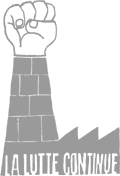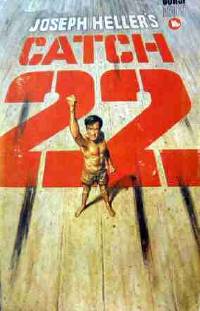 | |
|
19 September 2006 Art and Open Data (or, paying the mortgage)I was going to blog about viral licences (GPL/ShareAlike) and art tonight. Usually, this would need to start with a five-minute exposition of the basic issues. But coincidentally, Steve has given an outstanding, lucid talk about Open Data at EuroOSCon which provides a jumping-off point. If you're new to the licensing issues around (in particular) open geodata, go watch. It's an excellent summary of the issues involved. Listen to the MP3, too, because slide 3 ("so here's some open data") is a great RMS gag. EuroOSCon is essentially an Open Source event. Source implies code. Steve's talk is founded on the difference between code and data. I'd like to add a third category: art. What is art? Raoul Vaneigem called it poetry. "Poetry is the act which brings new realities into being, the act which reverses the perspective." Rather more prosaically, Bridgeman vs Corel - a crucial document in understanding issues of open data, even if (like me) you distrust its conclusions - contrasts "creative spark" with "sweat of the brow". Sweat of the brow is data. Creative spark is art.
And there are plenty of open art licences, too, like Creative Commons and the GFDL. Even traditional copyright law is generous to art. 'Fair use' can justify artists' use of copyrighted material. There's plenty of reasonable-ish case law on sampling, for example, which enables marvels like GLC vs New Order, GLC vs INXS, and the frankly magnificent GLC vs Awesome Three. Make money fa$t (or, bread from circuses)I could go on about copyright law (and Welsh rap) for ages, but instead will take a brief detour into the equally riveting subject of economics. Open code, or open source, already has a well-established economic basis. It's generally called the Red Hat model. Essentially, this means that the people who work for Red Hat earn a living by providing added value - chiefly technical support - over and above the hardcore raw uncensored Linux that you could download from anywhere. And let's not apologise when we say "earn a living". Free software advocates sometimes dismissively call it "making money", with a sniffy reference to some enormously rich monopolist, as if no-one should ever charge any money for anything. And yes, I see their point; my politics are left-wing social liberal LibDem; I have a visceral dislike for Crapita, EDS, Logica, Netdecisions (ahem); I hold no brief for Google or Microsoft raking in vast profits. But, frankly, that's a temporary irritant compared to the irrestible rise of free information. What is important is that people can support 'open works' (source, data, whatever) and earn enough money to pay the mortgage while doing so. That's why the Red Hat model is so important. The Red Hat model works well for people who can be employed as technicians. During the day, you get paid for supporting Linux; you go home, under the roof paid for by your day job, and hack on the kernel during your free time. That's great.
What this means for open dataWe don't need any new licences for art. But as Steve's 'Uh-oh' on slide 27 illustrates (pictured), we do for open data. Creative art is founded on sweat-of-the-brow data. Vaneigem again: "The materia prima is within everyone's reach. Poets are those who know how to use it to best effect." As I write, iTunes is playing Duruflé's superlative variations on the Veni Creator - creative variations on a 9th century chant, a piece of art that the passage of time (you know, 70 years after the death of the author) has turned into data. Open data is no use to artists when it employs a blunderbuss viral licence like Creative Commons ShareAlike. Such a licence dictates that only open art can be made from open data: and when anyone can copy the art for free, the artist can't pay the mortgage. For an artist, data licenced as ShareAlike is as frustratingly irrelevant as data licenced as Non-Commercial. The ante-penultimate slide of Steve's talk hints at the limited utility of data usable solely in the GNU world, when he says that "NC licences will slow but not stop open data". Or from the speech: "If the Ordnance Survey tomorrow would release all of their map data as Non-Commercial, that would take away most of the cause (of open data)... but it won't stop it." Free the cartographerSo eventually, we come back to our putative free geodata licence, as blogged previously. Geodata is data. Cartography is art. Geodata is sweat of the brow. Cartography is the creative spark. Red Hat-like technicians can earn a living from Openstreetmap. A courier company can pay technicians to optimise their routing using OSM data. (Especially if you parse the average speed from each GPS track.) Supermarkets can pay technicians to analyse OSM data to find areas which are badly served by existing stores. Since you're not distributing the work, only using it privately, you don't have to "share alike" with your conclusions. Cartographers and other artists can't currently do that. If a cartographer draws a map using OSM data, the finished work of art can only be distributed under a Creative Commons ShareAlike licence. Since anyone can copy it for free, the cartographer doesn't receive any payment for his work after the initial commission (if any), and the mortgage doesn't get paid. (For the artist, the data is closer to an application than a creative work - and no-one is suggesting that art drawn using an open source program like Inkscape must be distributed under the GPL.) Is, therefore, the artist's role purely that of a leech - sucking up open data to earn their own living, with no thought for anyone else? I don't think so. Firstly, the existence of good art benefits society. We need artists: if open data encourages art, that's enough in itself. Secondly, as per the previous posting, a "derived works" clause can be drafted carefully to retain the viral provision for data but not art. The cartographer might draw a map using 60% open data. Before this map can be published, the other 40% must also be declared free, while the entirely new art on top of this remains the artist's copyright. That's a great result for open geodata, which gains a whole new swathe of information - a swathe which has only been "freed" because the cartographer could use the first 60%. I am thoroughly delighted that Steve has brought the fundamental difficulties of open data licensing to such a high-profile audience. Let's hope this is the start of something really useful. CommentsHello Richard, Just to add another point of view.... There are many on the side of Copyleft (a.k.a. ShareAlike) NOT because of utilitarian wants or needs (like the ones you described in your article). But because of their morality. They believe that the enforcement of copyright law is immoral. And use Copyleft as a mechanism to try to make the world as if copyright law did not exist. (Again, I'm NOT trying to change anybody's opinions on this. Just pointing out another point-of-view.) -- Charles Posted by Charles Iliya Krempeaux on 30.9.06 18:37 Poor Maurice Duruflé died as recently as 1986 having suffered a disabling car accident a decade earlier. Posted by Ed Grimsdale on 1.2.07 17:07 Nice Post. That was well said. Always appreciate your indepth views. Keep up the great work! John Posted by JohnFrangerson on 1.2.07 18:02
Posted by uncensored together pc Drawn on 18.5.08 17:57
Posted by together uncensored Drawn shower on 19.5.08 02:48
Posted by together Drawn pics uncensored on 19.5.08 06:12
Posted by -² -°-½-‚-¸-¼-°-ƒ-»-½-µ-‚-¸-·-¼ on 21.6.08 10:05
Posted by evista sp1 on 24.7.08 02:14 |
SitesGeowiki PeopleEugene Baston ElsewhereBisbrooke 
|
 Licences exist for open source,
Licences exist for open source,  That doesn't work for art. If you want to earn a living from art, you can either become a gun for hire - working to patrons' commissions - or you can have the brave faith in your own abilities that, some day, someone will pay for the art that you are compelled to make. Either way, you can only keep up with the mortgage so long as people are prepared to give money to own, or use, your artistic creation. There is no equivalent of the Red Hat technician. (Unless you're prepared to sweat the brow from 9 to 5 and use your little remaining energy to fire up the creative spark in the evening. Sure, it worked for
That doesn't work for art. If you want to earn a living from art, you can either become a gun for hire - working to patrons' commissions - or you can have the brave faith in your own abilities that, some day, someone will pay for the art that you are compelled to make. Either way, you can only keep up with the mortgage so long as people are prepared to give money to own, or use, your artistic creation. There is no equivalent of the Red Hat technician. (Unless you're prepared to sweat the brow from 9 to 5 and use your little remaining energy to fire up the creative spark in the evening. Sure, it worked for